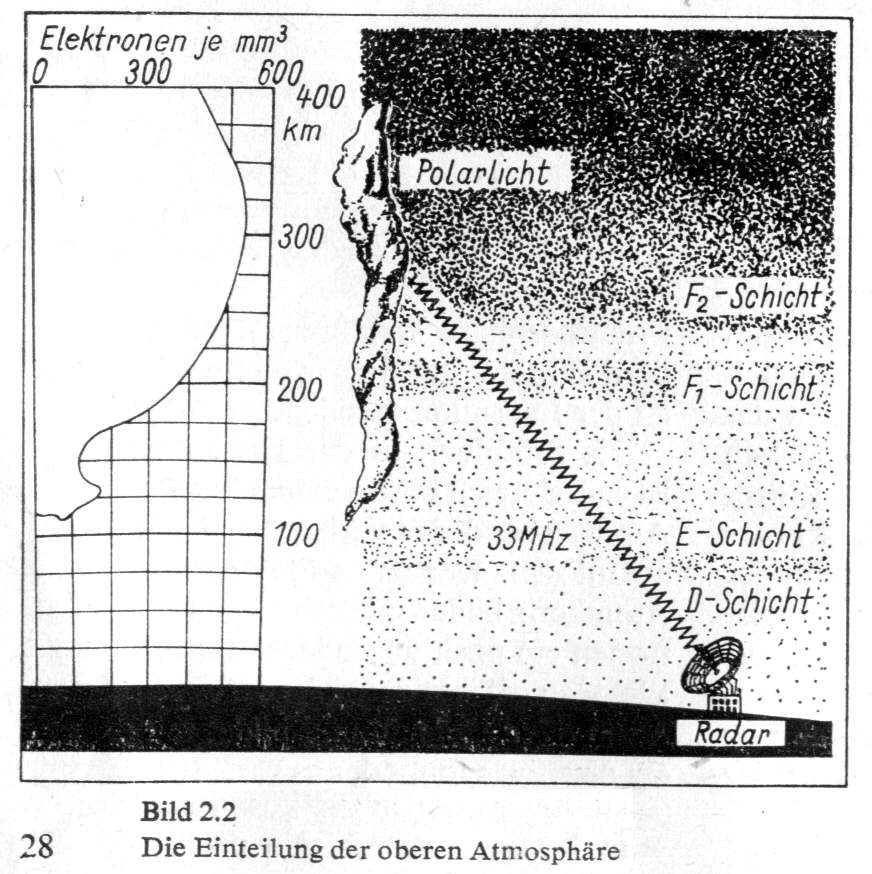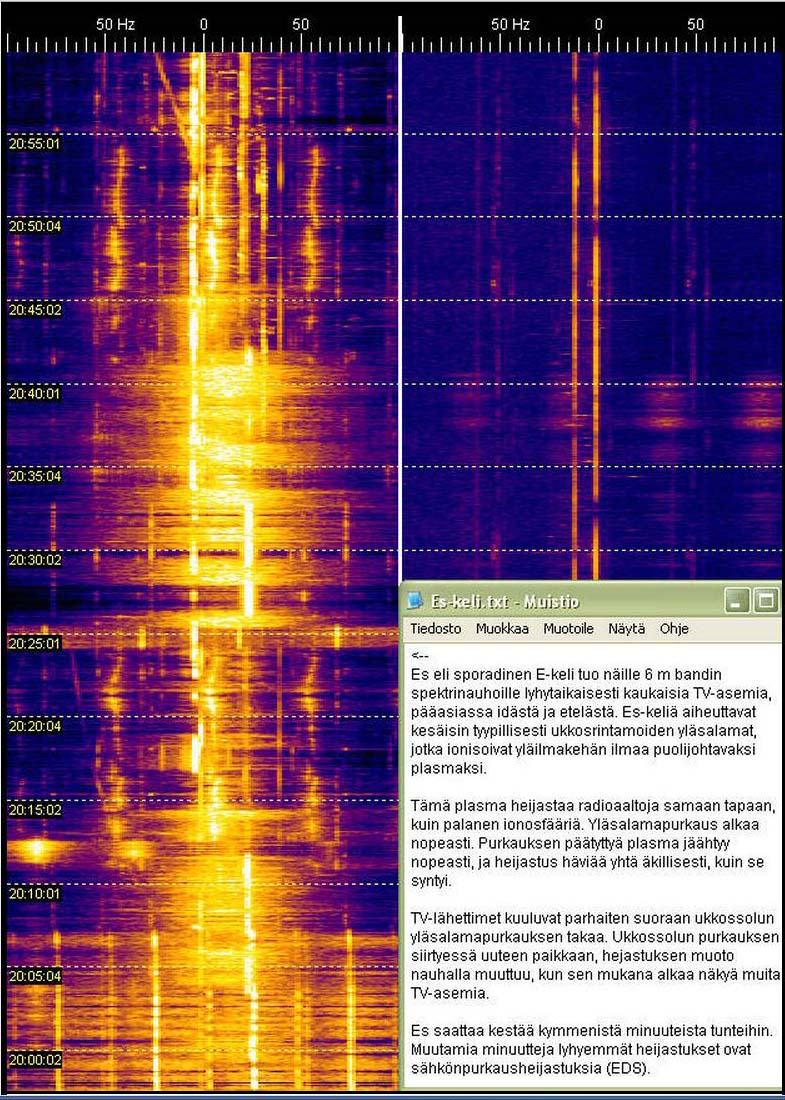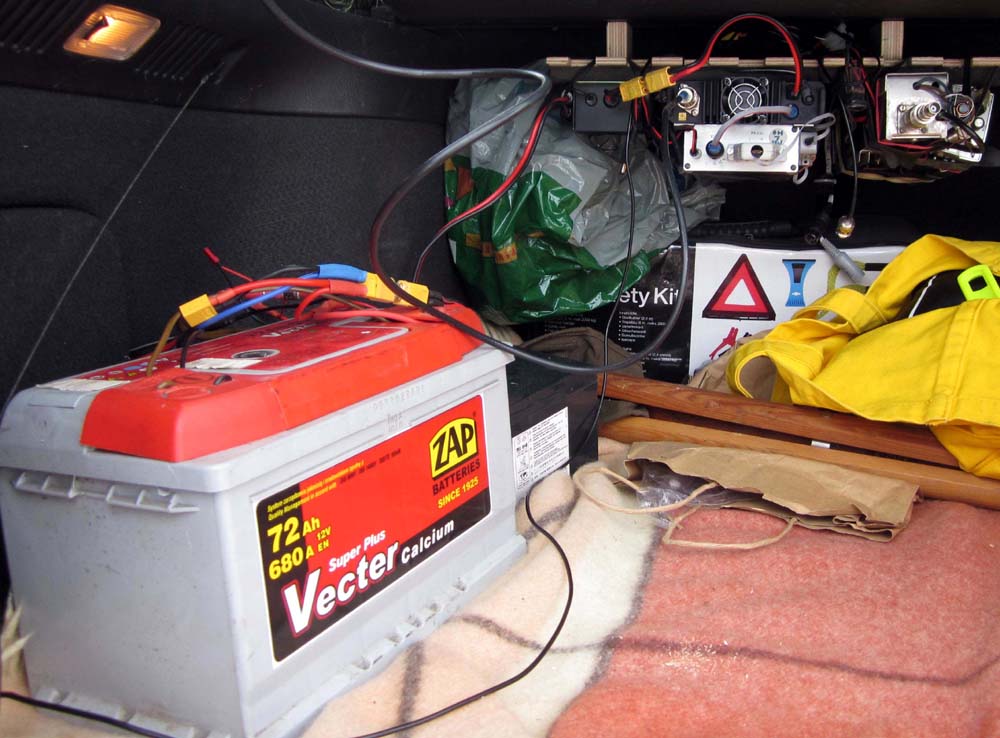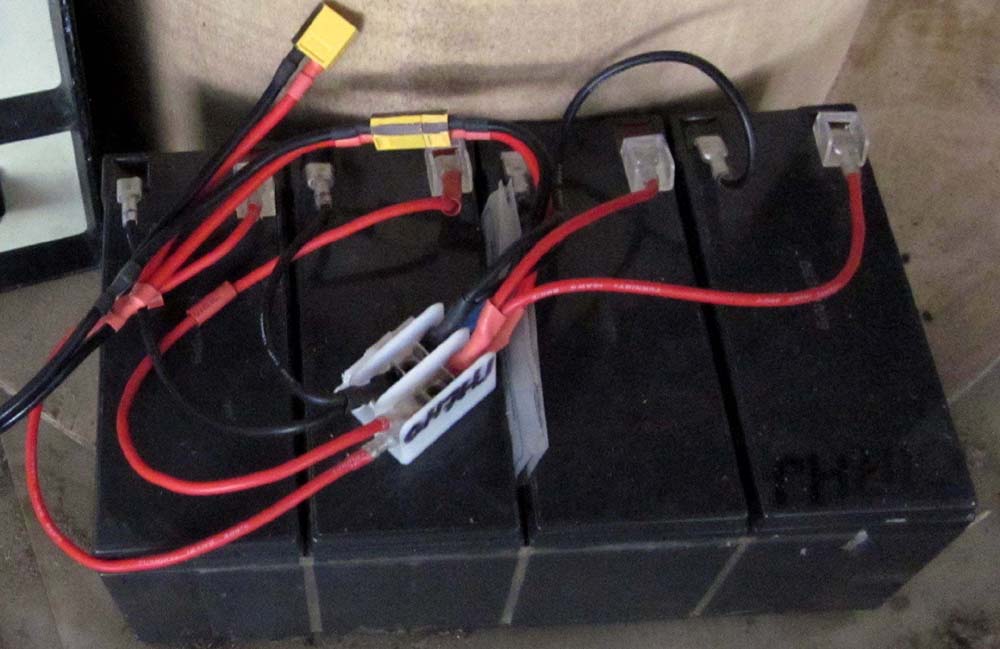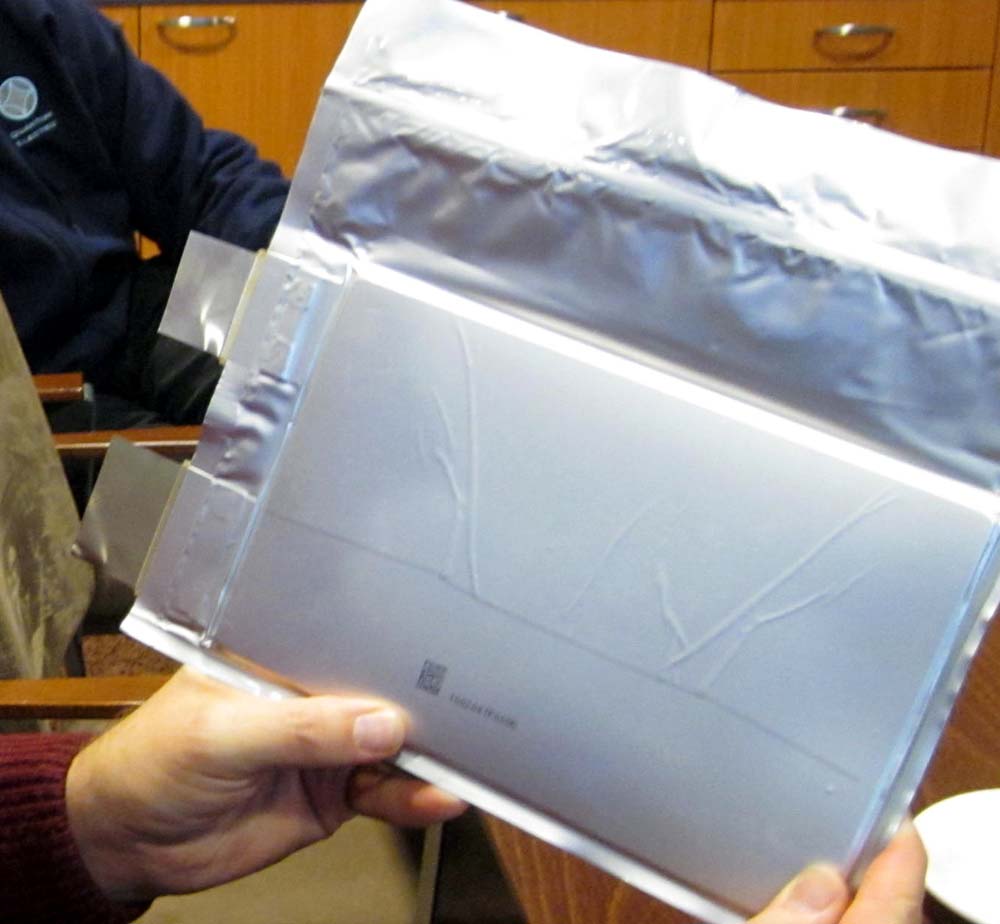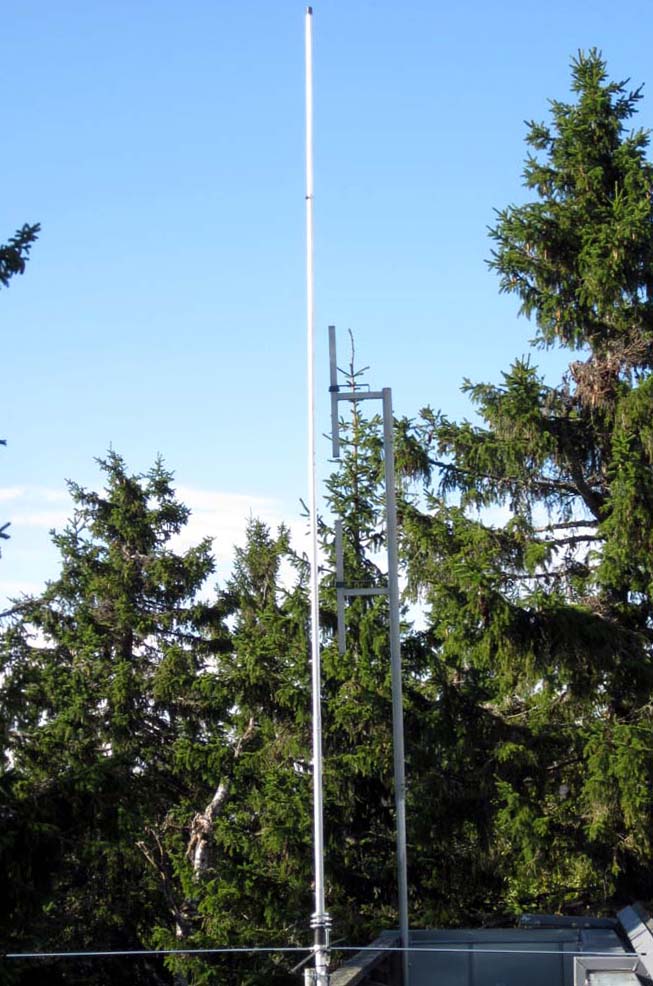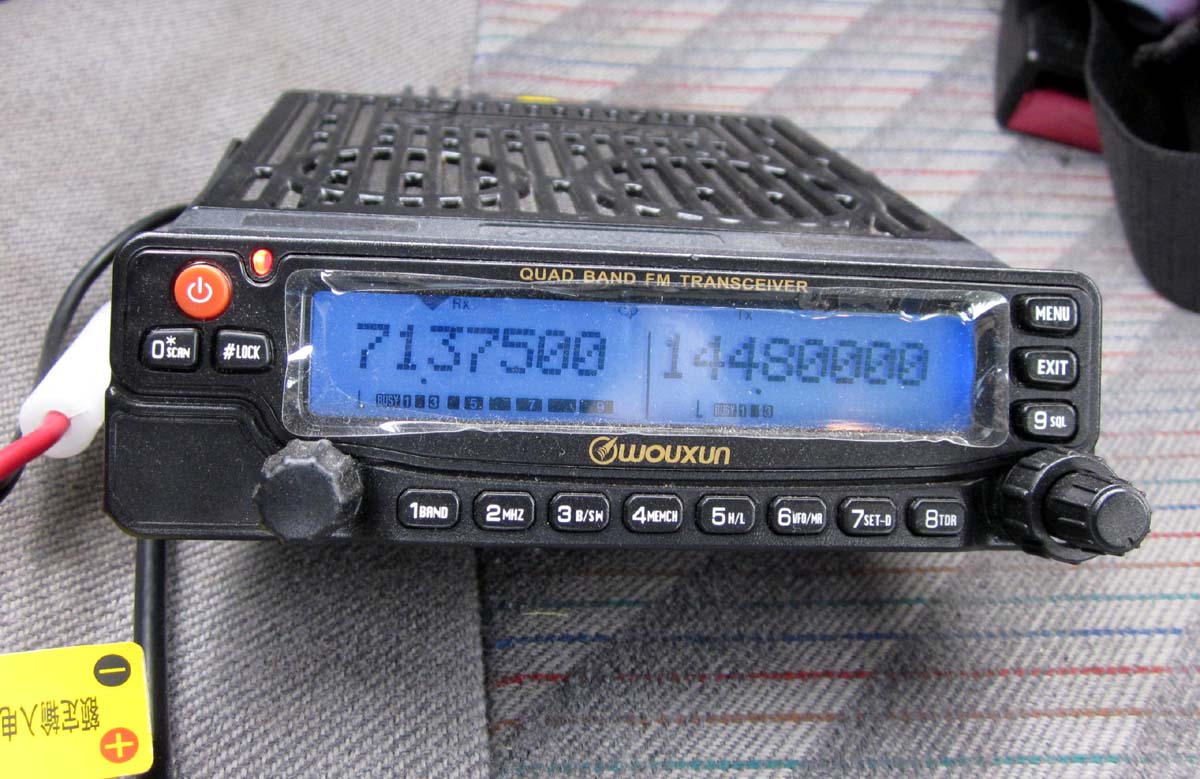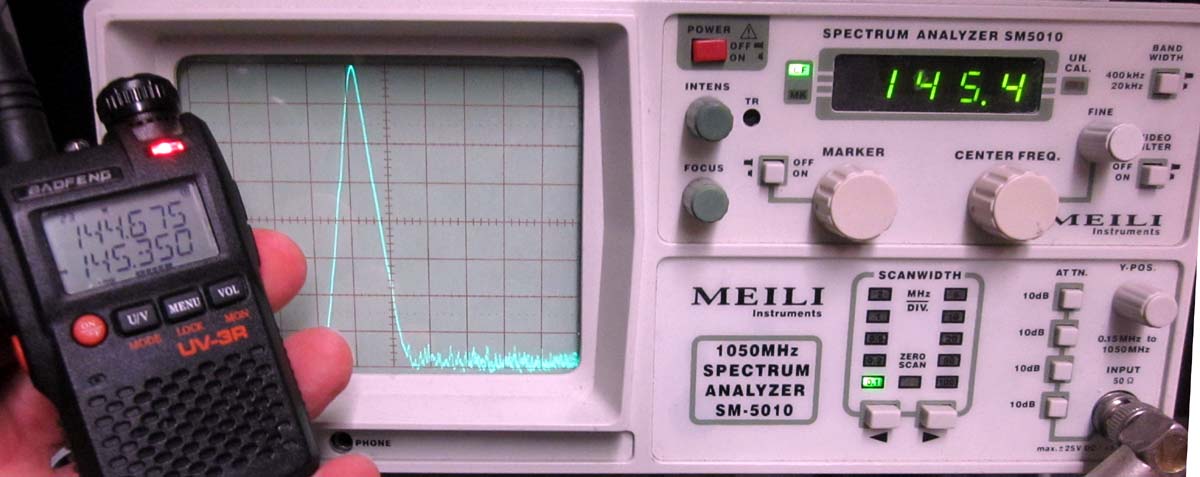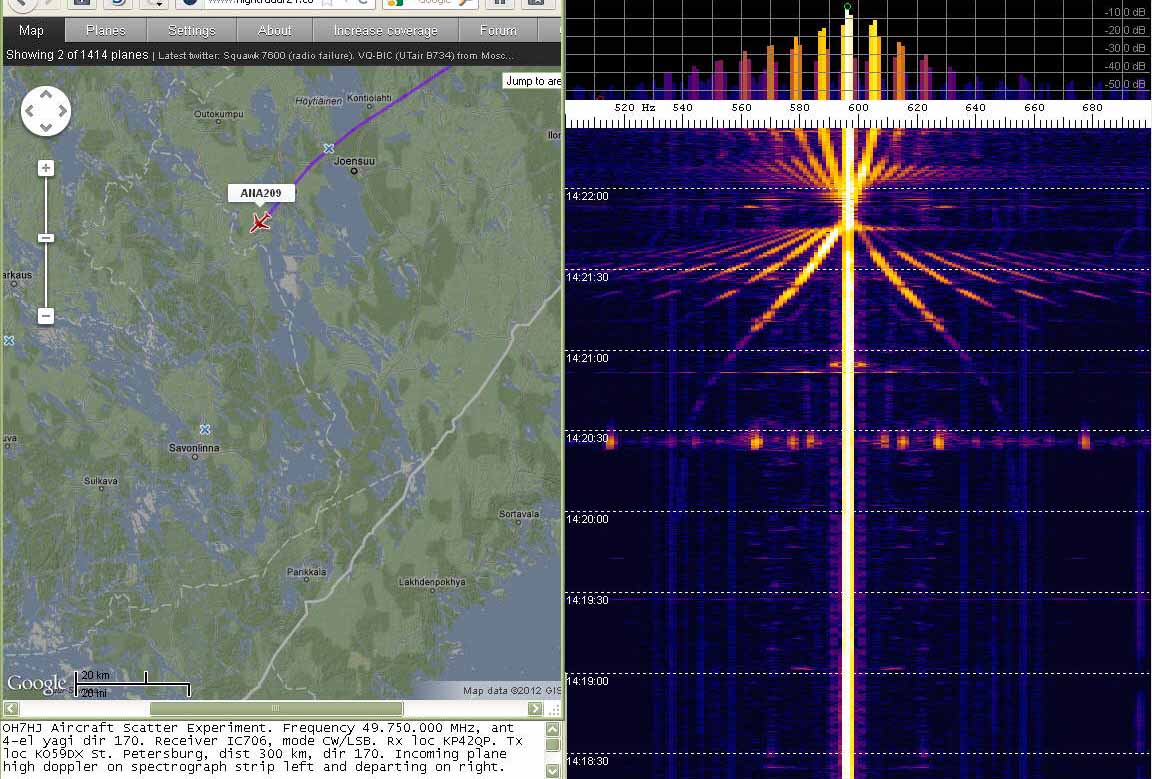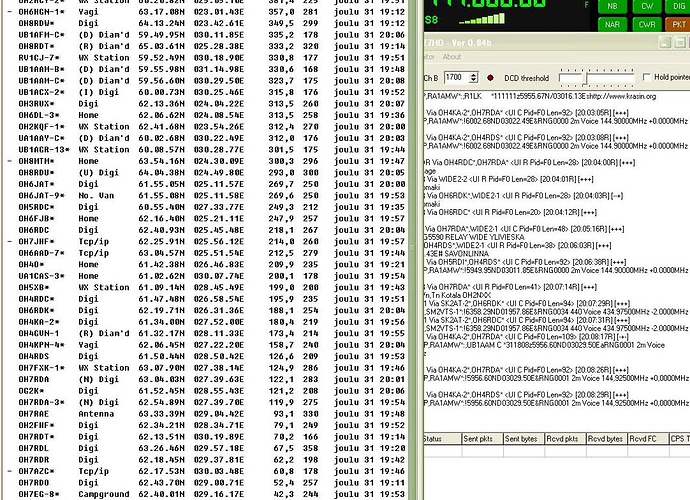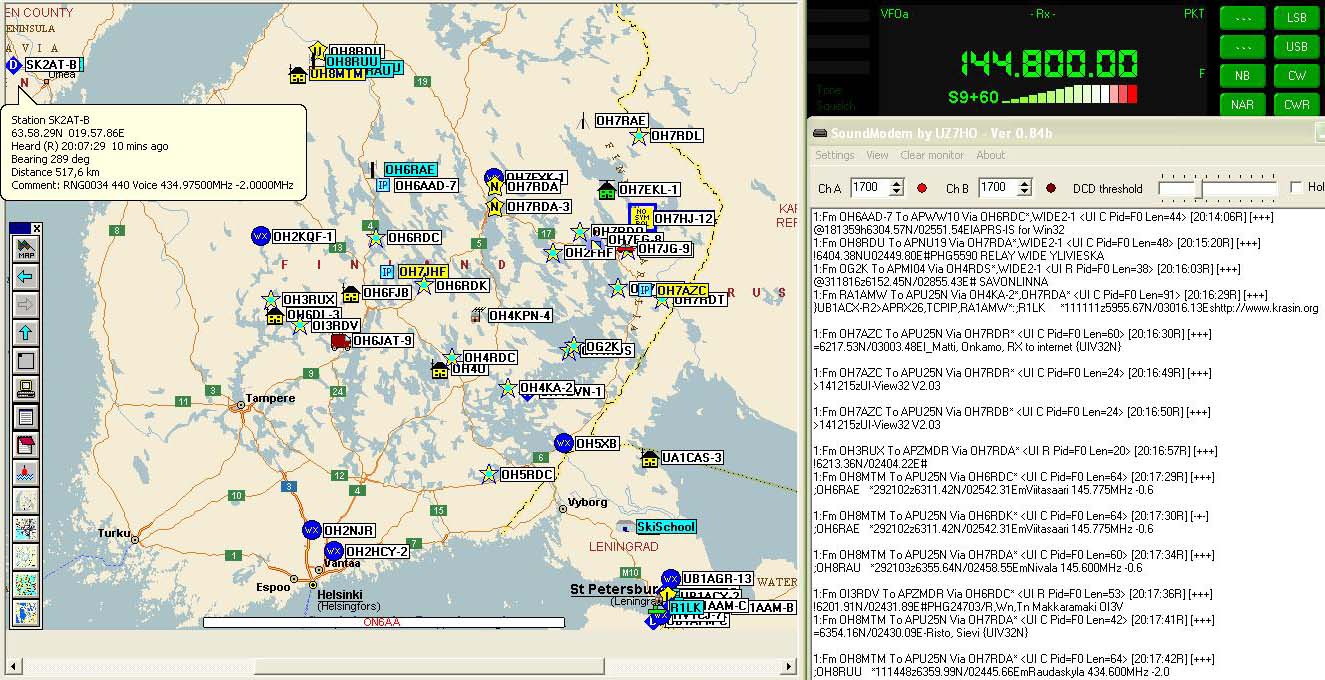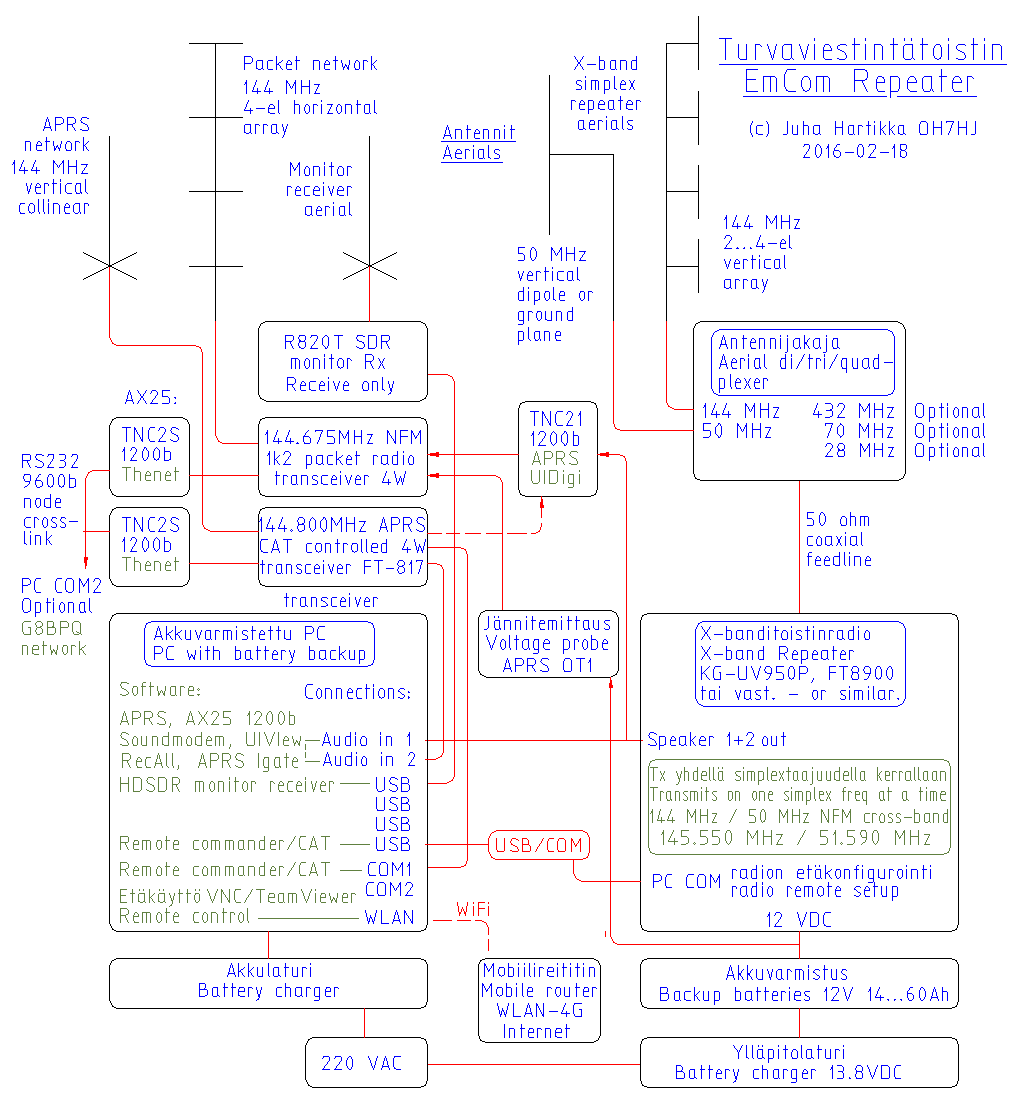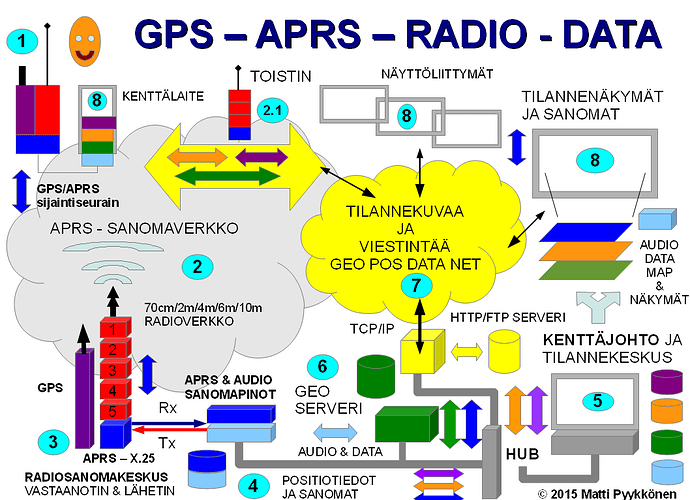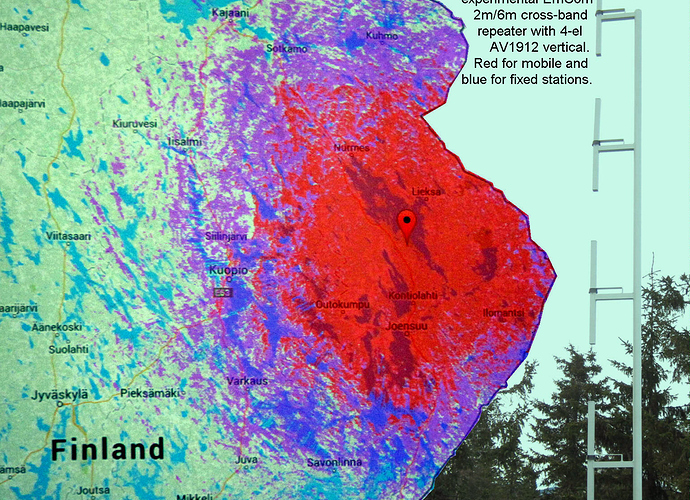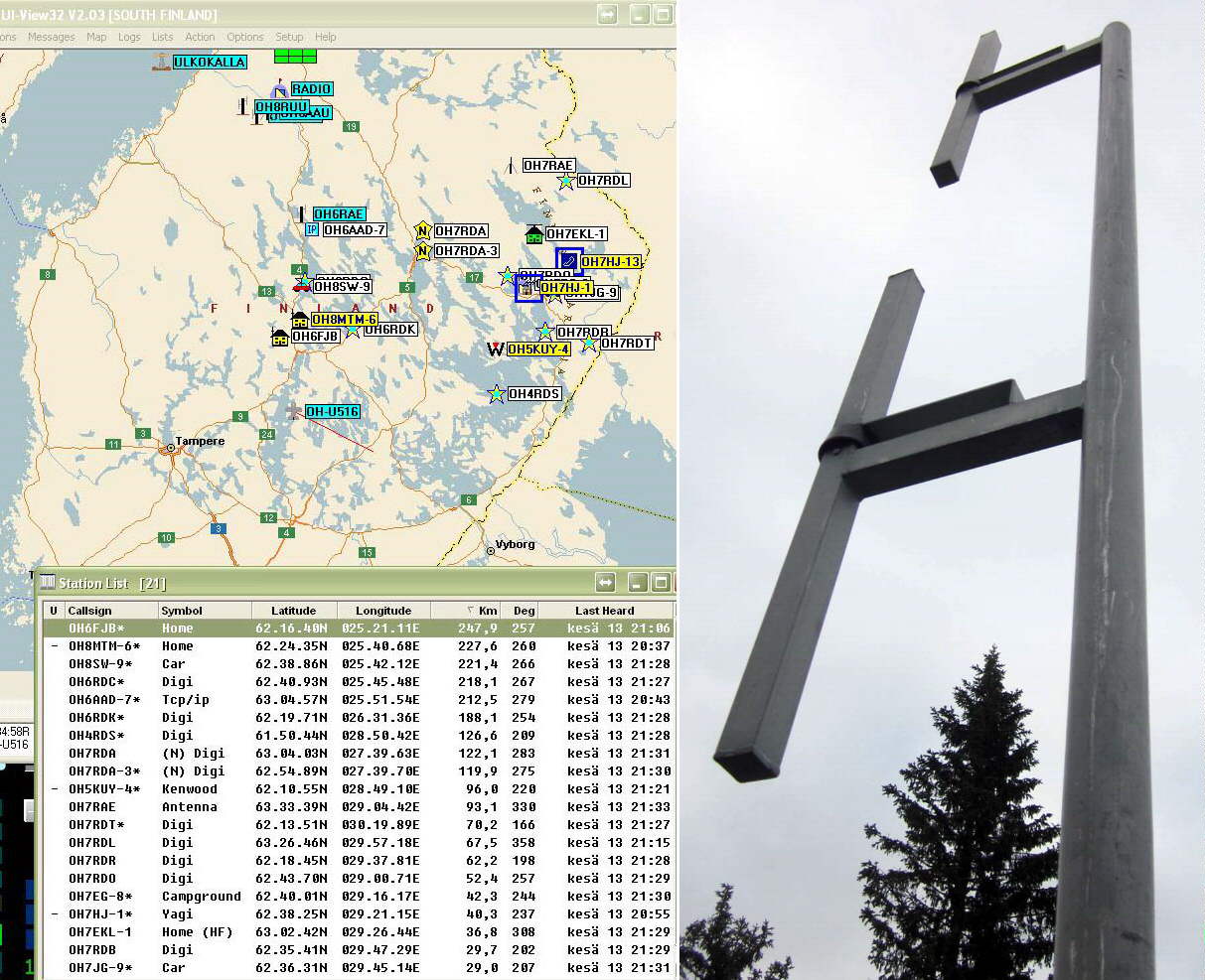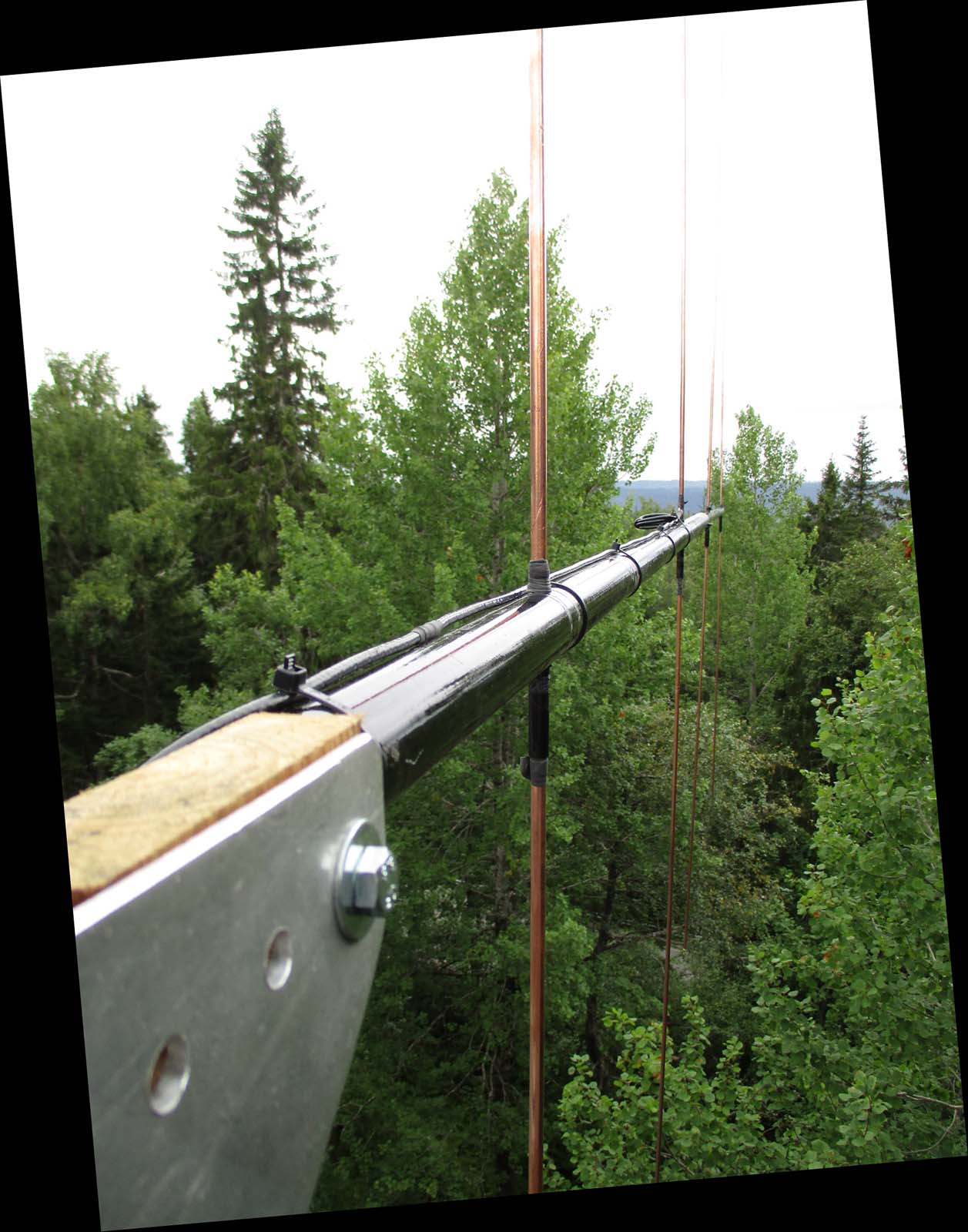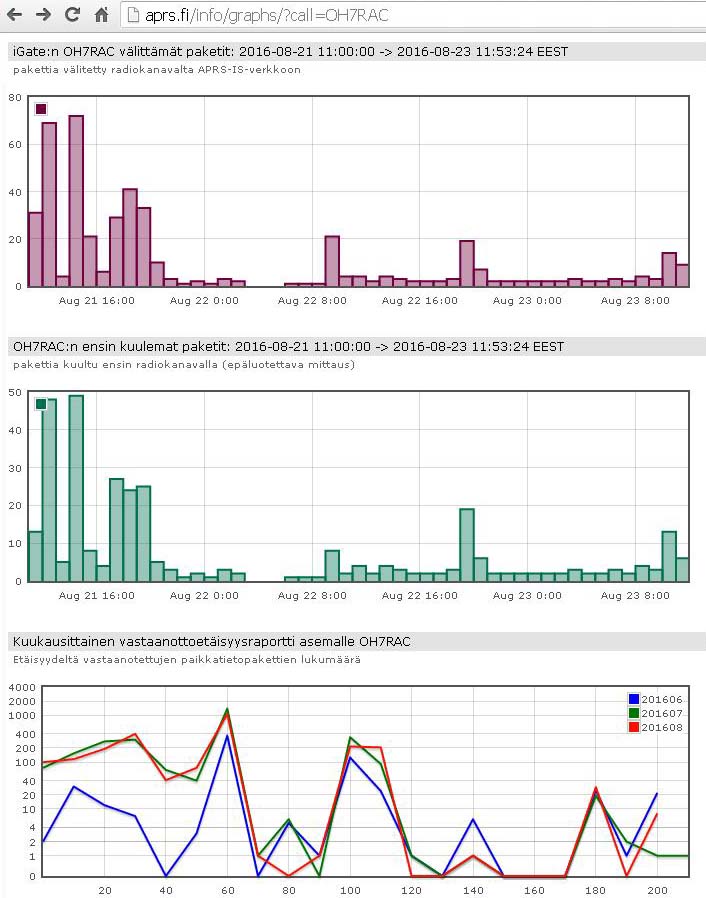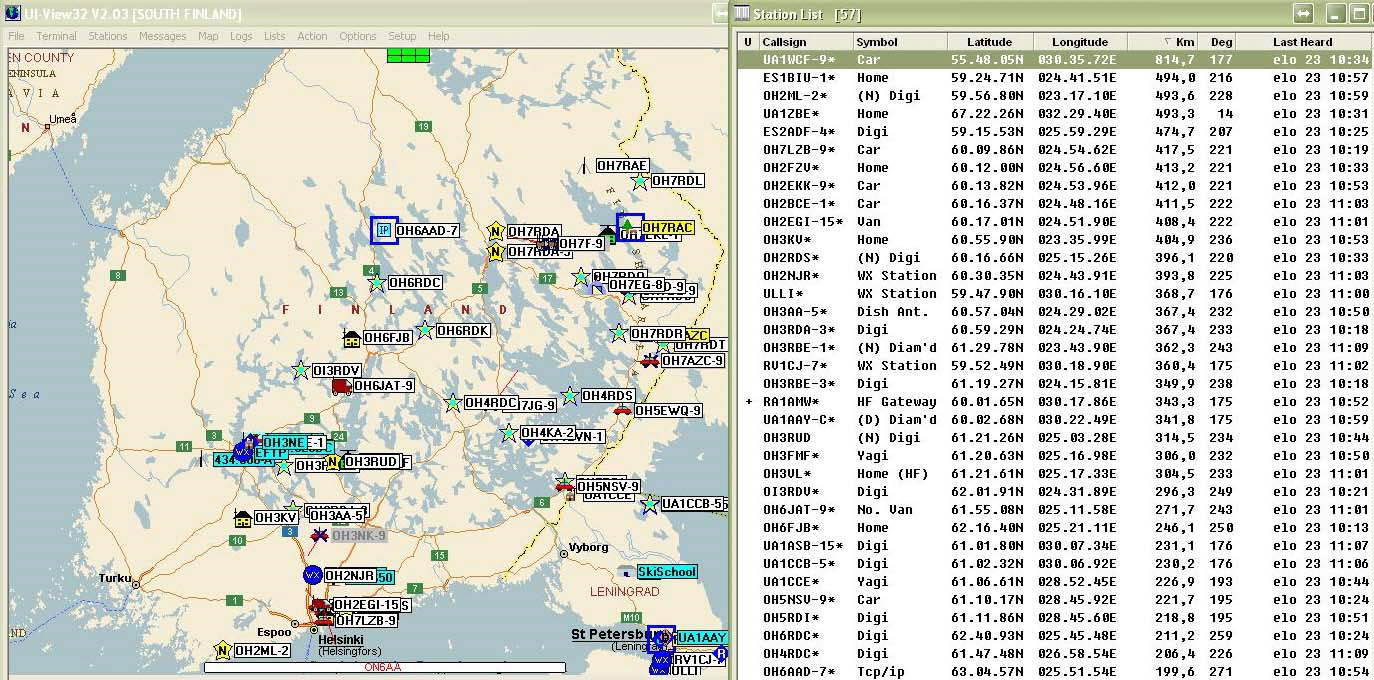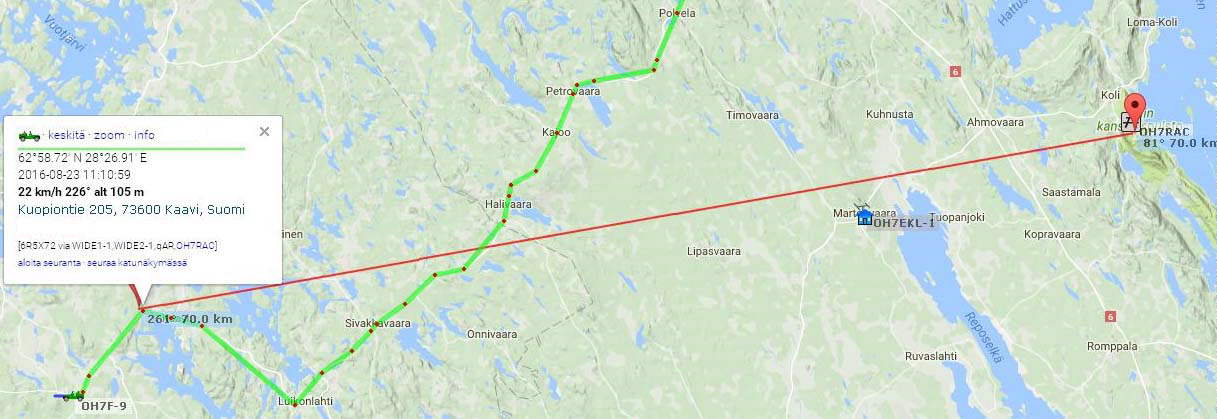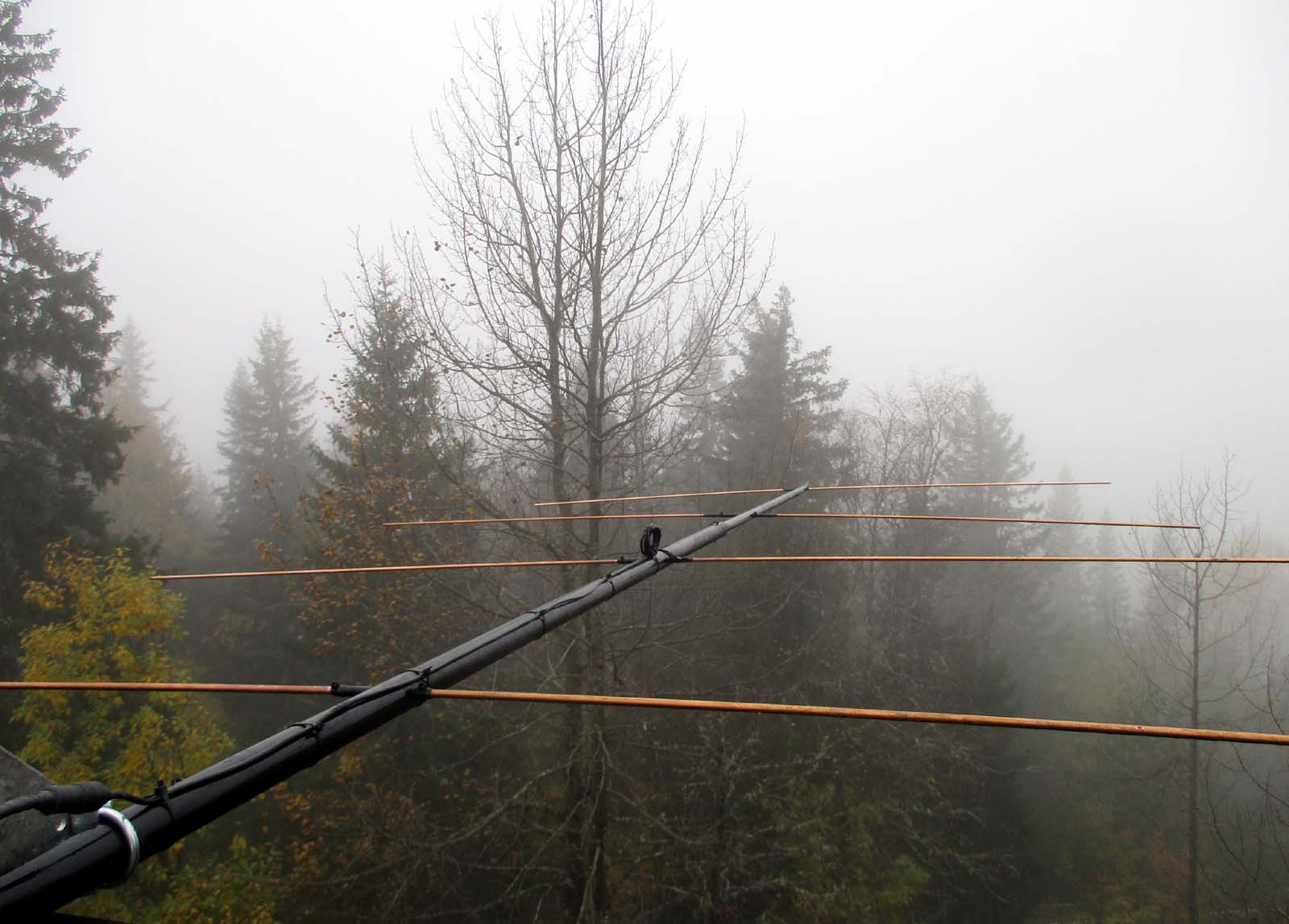In August 2014, an EMCOM group of Finnish radio amateurs tested a simple and inexpensive 50 MHz / 144 MHz cross-band FM phone repeater. Its range to mobile ham stations was found to reach 100 km in mixed terrain, and to home stations with fixed aerials beyond 160 km.
The long range X-band repeater experiment was done with an experimental repeater mounted to the high hill of Outokumpu with Tx power of 20 W to a 5…6 dBd omnidirectional 4 x vertical dipole array for 144 Mhz band, and 10 W to a zero-gain GP aerial for 50 MHz band. Transceiver was an unmodified 4-band FT-8900R, which has a cross-band repeater function as its standard option.
The surrounding East Finland terrain was rough and hilly, covered with forests, which makes reliable communications difficult especially for moving cars. Previous tests have proven UHF bands rather useless in this surrounding, while high VHF bands like ham 144 MHz or 2 m are found fairly useful.
HF bands are good as long as experienced hams are operating them from fixed stations, and bands are open. So the experiment aimed for finding a solution for 24 hrs ready mobile connection for uninterrupted ranges of 0 … 100 km or more.
Duplexer Free X-band Repeater Advantages:
- Optimal Rx sensitivity with minimal Tx power losses,
- Wide band frequency adjustability for relaying NFM radio networks,
- Low cost, compact size and easy installation.
50 MHz penetrates into landscape
However, low VHF bands like 50 MHz provide much better range into the difficult terrain, thanks to its long wavelength of 6 m, which gives the wave an ability to bend behind hills and to travel through forests with very little surface loss due to absorption by vegetation.
Although remarkable by its penetration into deep forests, the sore point of 50 MHz is its sensitivity to domestic interference caused by common digital electronics. Fortunately the interference caused by populated areas is rapidly cut by distance, so it is an obvious solution to select places for provincial 6 m repeaters with some distance from human settlements and cities.
144 Mhz is fairly useful in urban environment, because local interferences are on this upper VHF band less intense and dense than on low VHF of 50 MHz. Also being very common ham mobile equipment, the 2 m is a good compromise between range and resistance to interference, and mounted to cars it works with fairly short and handy mobile aerials. These made the 2 m band the choice for mobile connection for this cross-band repeater experiment.
‘6m Pipeline With 2m Taps’
Now, where comes the concept of ‘network repeater’ in the picture? It comes with the cross-band repeating option. Think of 6m/2m X-band repeaters scattered to good, high radio station spots in countryside. When many repeaters are put on the same 6 m base freq, but their 2 m freqs are different, each repeater will relay 2 m traffic it hears out thru the common 6 m channel to neighbouring repeaters, which in turn relay it out from their 2 m channels again.
My fellow ham illustrated the crossband repeater network as “a wide pipeline of 50 MHz, with local 144 MHz taps”. This kind X-band repeater works on both common and local freqs with standard simplex FM channels, free from crowded duplex repeater channels and from complex user radio setups. Neither opening tones or subtones are required for 144 MHz users of these X-band repeaters, unless desired for some special reason, like for creating private sub-networks. Also, any local ham 2 m and 70 cm repeaters are easy to join to the long range repeater network, as well as the ‘official’ NFM phone communications networks between 144 … 170 MHz and on 430 MHz bands.
Being easy to use helps to make traffic transparent and quick to join for inexperienced users, providing a ready-to-use emergency communications aid with simplest basic setups of common handheld, mobile or fixed transceivers. Also, these kind repeater networks built from off-the-shelves parts are quick and simple to mount to destructed catastrophe areas for first voice emergency communications.
EMCOM Repeater Obstacles
We have got simple, inexpensive and easy means of building wireless networks of either fixed or portable or mobile X-band repeaters, for reliable wireless bad terrain mobile to mobile connections some 300 km or even more away, and for fixed home station connects 500 km away. Or in favourable open terrain, still farther. Built with pocket money. So, why these are not yet popular?
Main obstacle of building long range repeaters is limited access to good high station locations. There are good places on hills, high buildings and masts, but usually available exclusively for companies, clubs or communities only. Local ham radio clubs are maintaining traditional local semi-duplex repeaters only, usually without interest in emergency communications beyond their own cities.
The critical precondition for building these simple and reliable provincial and national long range EMCOM repeater networks is support from any organization for applying access to good provincial station locations. There are only few supporters yet.
Practical X-Band Repeater Network
An independent network of two-way cross-band simplex FM repeaters OH7RAC and OH7RAD is in use. These simplex repeaters have no hanging carrier so working on them is quite like working usual ‘straight’ QSO’s. Users of simplex repeater appear like any other users on same frequency.
These repeaters are remotely configurable via internet for different communications modes and setups. Interconnecting wireless provincial EmCom network works on their common 50 MHz base frequency. In addition, these repeaters have APRS igates listening to both voice repeater frequencies.
OH7RAC, Koli, locator KP43VC: 144.525 MHz CTCSS 85,4 Hz, info automatic.sral.fi/index.php?st=725
OH7RAD, Savo, locator KP32XM: 144.650 MHz CTCSS 85,4 Hz, info automatic.sral.fi/index.php?st=756
Common base frequency: 50.850 MHz CTCSS 151,4 Hz.
Battery Backup Power
Stations are battery backupped. The repeater power source is a set of standard 12 V UPS batteries connected to a charger. When mains feed is lost these backup batteries keep the repeaters working for days. Indicated battery voltage drops and radio box temperature climbs a little when there is continuous phone traffic on this X-band repeater.
Battery voltage and radio box temperature relayed online through 2 m APRS network from an experimental EMCOM X-band long range provincial repeater OH7RAC covering entire northern and central North Carelia:
Full charge: aprs.fi/?c=raw&call=OH7RAC-13
Low voltage: aprs.fi/?c=raw&call=OH7RAC-12
- Juha -
OH7HJ
MSc, CTO
Quantum Electric Ltd.
LUT Radio Doppler Team
Member of SRT ry
Experimental EmCom Links:
OH7RAC wiki page: fi.wikibooks.org/wiki/Radiotaajuuskirja/OH7RAC
Mobile and home station coverage of Lake Pielinen experimental EmCom Repeater: viewtopic.php?f=15&t=225&start=60#p1791
Example schematic of two X-band repeater wireles network: viewtopic.php?f=15&t=225&start=60#p1856
GPS - APRS - radio - data - message server: viewtopic.php?f=15&t=225&start=60#p1775
Experimental EmCom radio network KRH map: radiohullut.net/viestiverkko … erkko.html
Finnish EmCom Facebook page: facebook.com/groups/108089039526164/
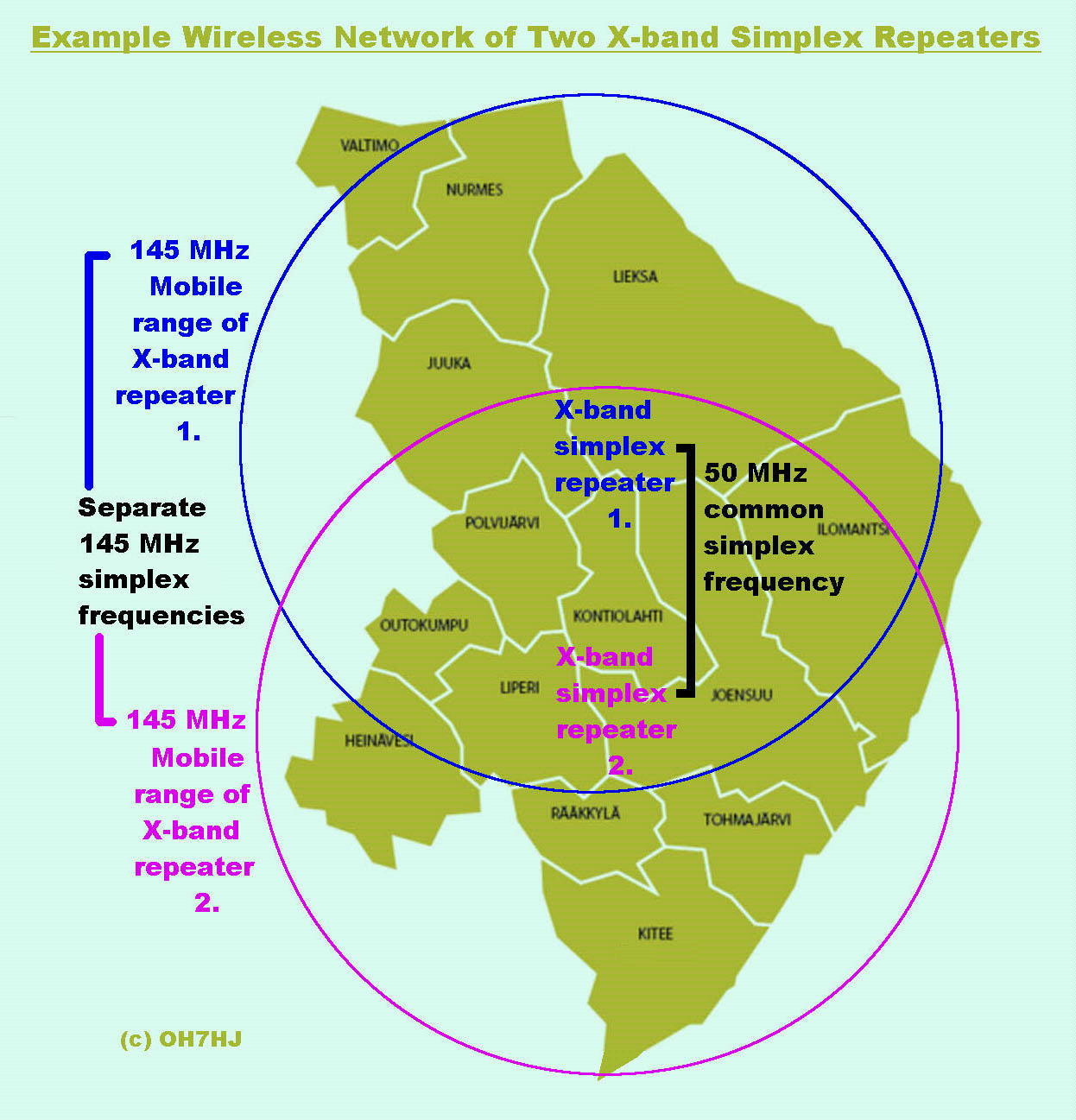
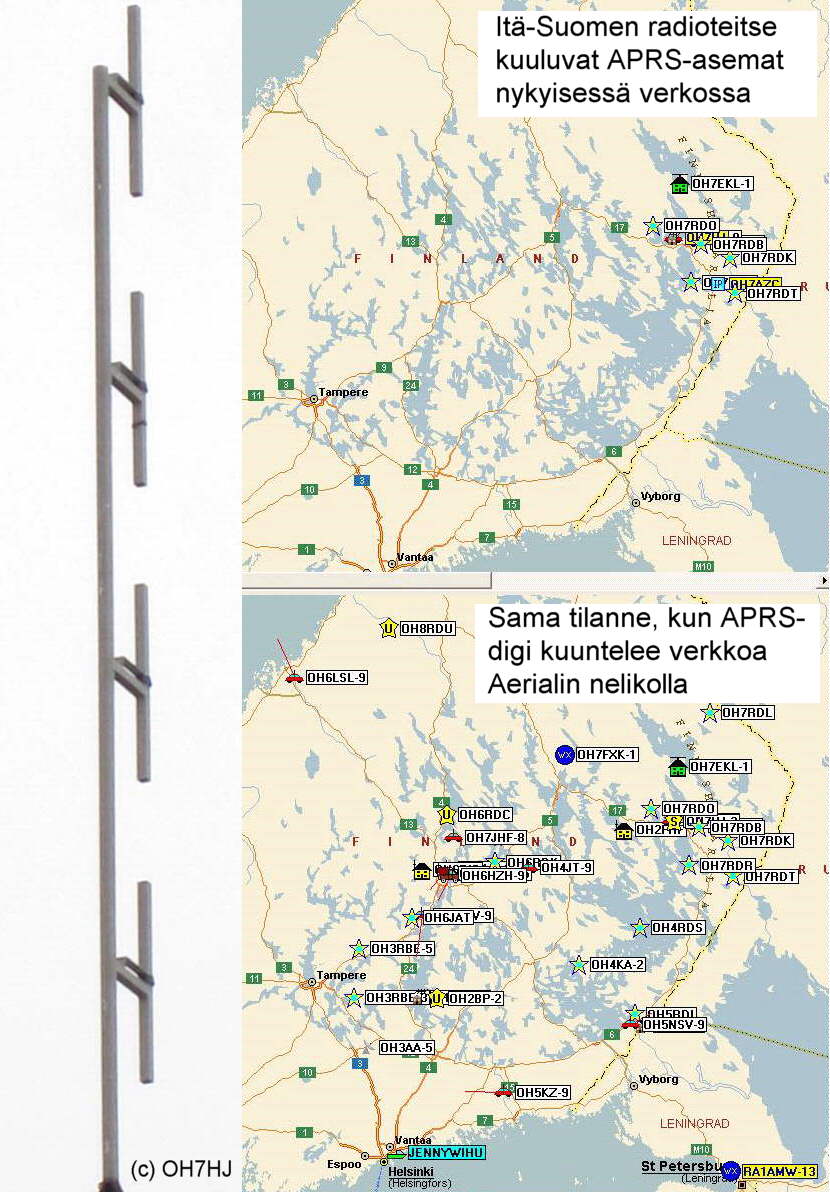
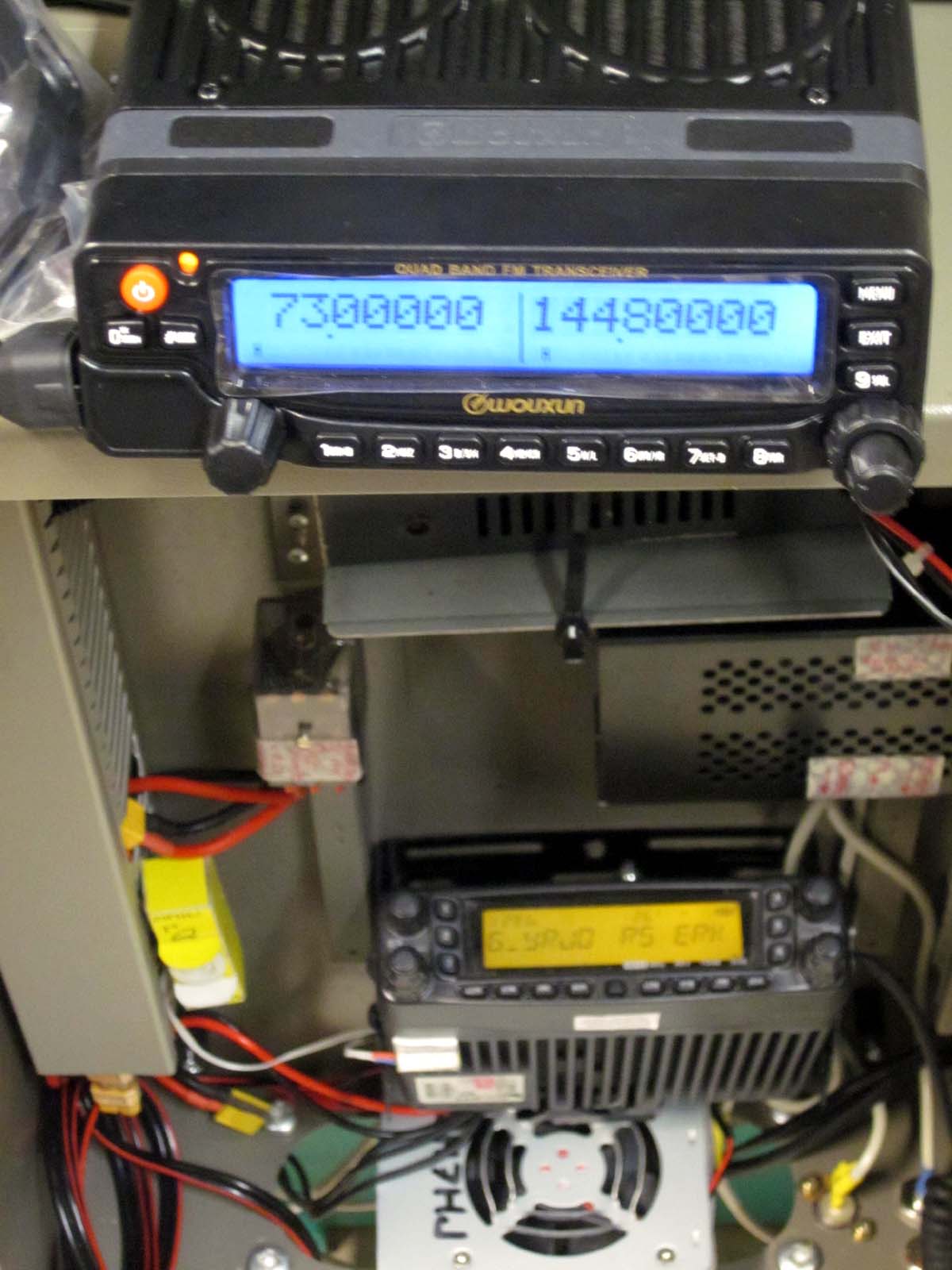
 Maavirta ei pääse kulkemaan talon maajohtimia pitkin, jos maadoituspisteitä on vain yksi.
Maavirta ei pääse kulkemaan talon maajohtimia pitkin, jos maadoituspisteitä on vain yksi.

